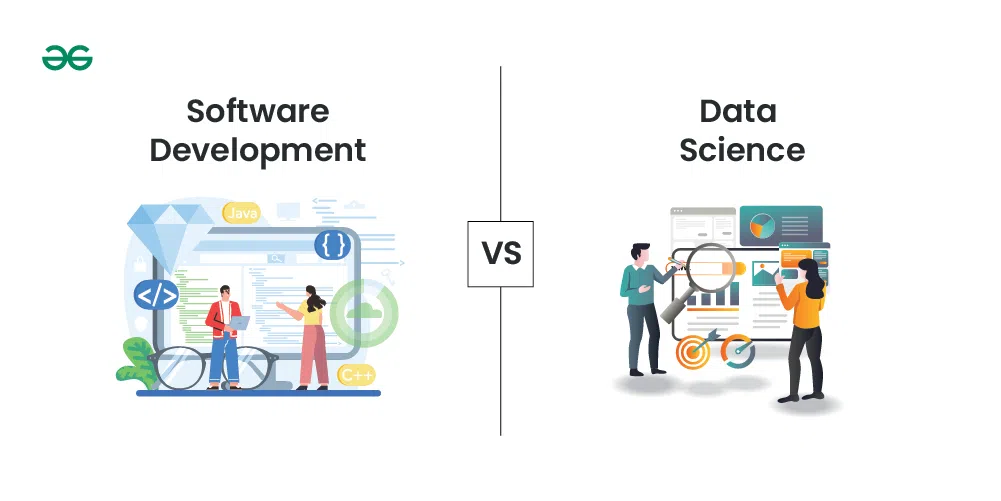Difference Between Software Development and Data Science
Last Updated :
23 Jan, 2024
What is Software Development?
Software development is defined as the process of designing, creating, testing, and maintaining computer programs and applications. Software development plays an important role in our daily lives. It empowers smartphone apps and supports businesses worldwide. Software developers develop the software, which itself is a set of instructions to perform a specific task. Software developers are responsible for the activities related to software, which include designing, programming, creating, implementing, testing, deploying, and maintaining software. Software developers develop system software, programming software, and application software.
What is Data Science?
Data science is a concept that brings together ideas, data examination, machine learning, and their related strategies to comprehend and dissect genuine phenomena with data. It is an extension of data analysis fields such as data mining, statistics, and predictive analysis. It is a huge field that uses a lot of methods and concepts that belong to other fields like information science, statistics, mathematics, and computer science. Some of the techniques utilized in Data Science encompass machine learning, visualization, pattern recognition, probability modeling data, data engineering, signal processing, etc.

Software Development and Data Science
Difference Between Software Development and Data Science:
| Building and maintaining software applications |
Extracting insights and knowledge from data |
| Delivering functional, reliable, and efficient software |
Extracting meaningful patterns and information from data |
| Coding, testing, debugging, and maintaining code |
Data cleaning, analysis, modeling, and interpretation |
| Programming languages (e.g., Java, Python, C++) |
Programming languages (e.g., Python, R), SQL, and tools for data analysis (e.g., Pandas, NumPy) |
| Follows software development life cycle (SDLC) |
Often follows the data science life cycle (DSLC) |
| Software applications, websites, systems |
Insights, predictions, recommendations from data |
| Programming, problem-solving, software design |
Statistics, machine learning, data analysis, domain knowledge |
| Reliability, performance, usability, security |
Model accuracy, precision, recall, AUC, F1 score |
| Agile methodologies often used for iterative development |
Iterative exploration and refinement of data models |
| Wide range of domains (e.g., finance, healthcare, gaming) |
Various domains (e.g., finance, healthcare, marketing) |
| Building a mobile app, web development |
Predictive modeling, clustering, classification |
| Typically involves managing input/output data within the application |
Involves cleaning, transforming, and analyzing large datasets |
| Integrated Development Environments (IDEs), version control (e.g., Git) |
Jupyter Notebooks, TensorFlow, PyTorch, scikit-learn |
Conclusion:
The primary goal of software development is to create and maintain functional software applications using programming languages and established development processes. Data science, on the other hand, is concerned with extracting insights and knowledge from data through statistical analysis and machine learning. While software development focuses on creating dependable systems, data science seeks to uncover patterns and information in large datasets.
Share your thoughts in the comments
Please Login to comment...